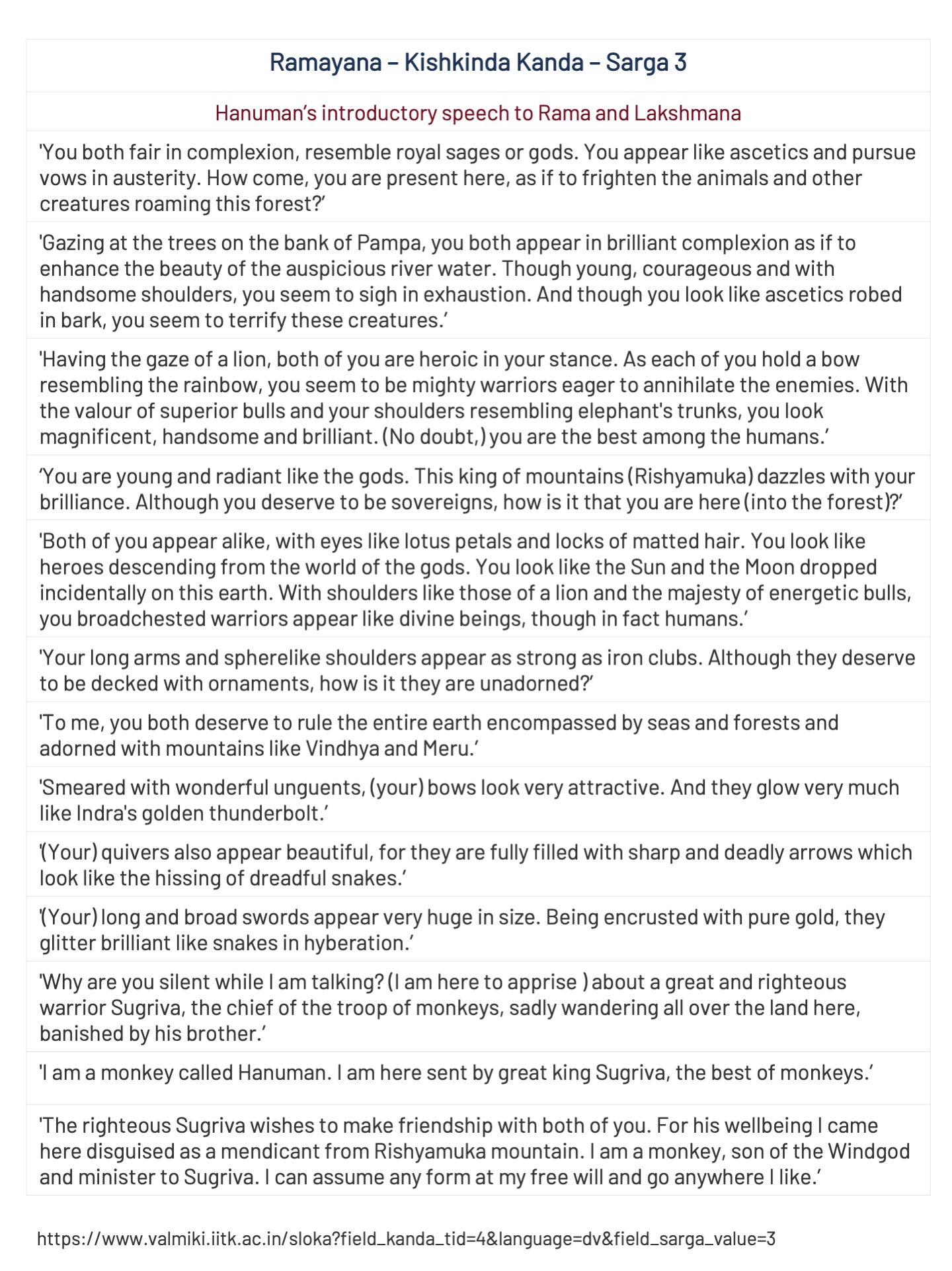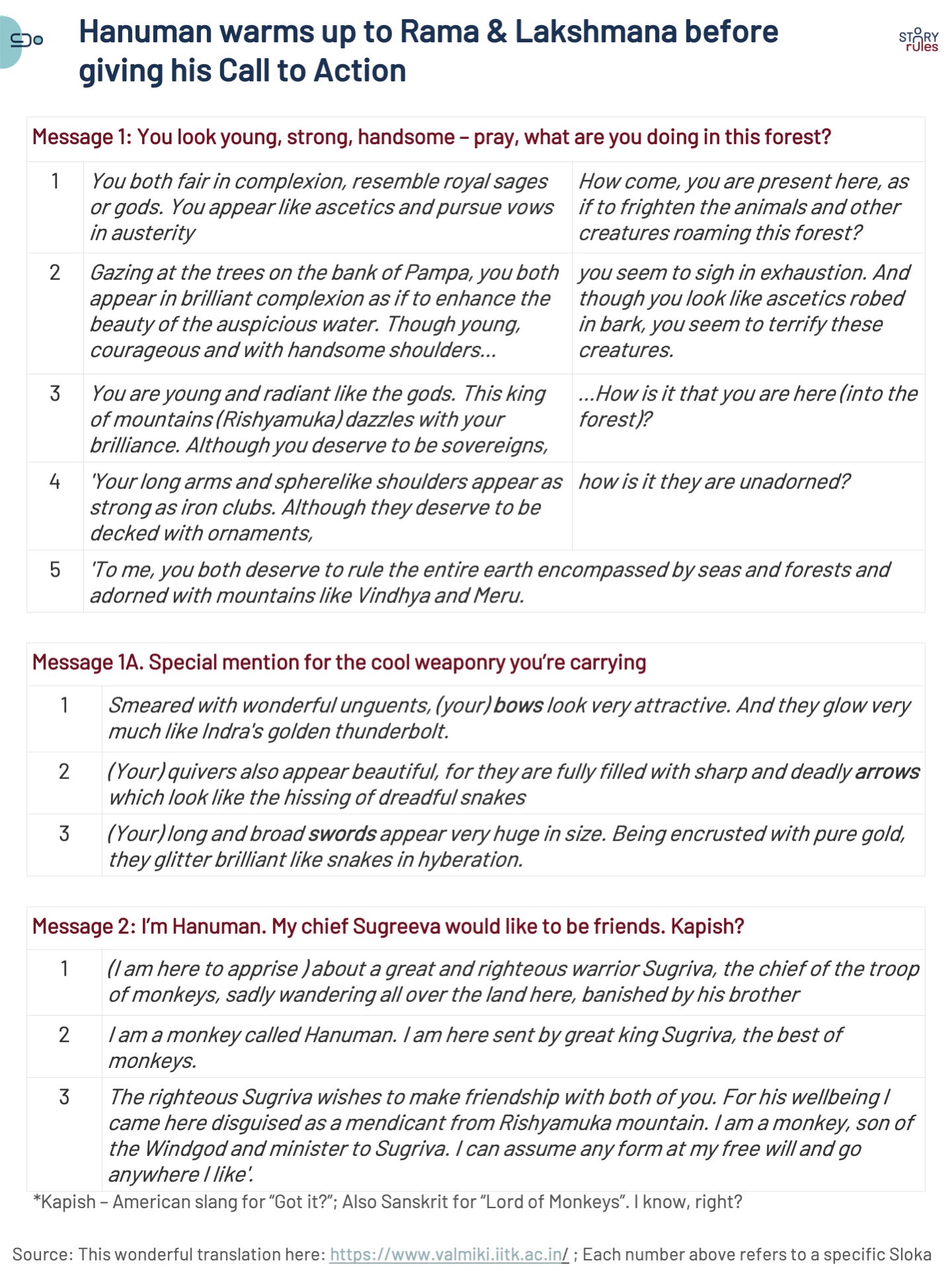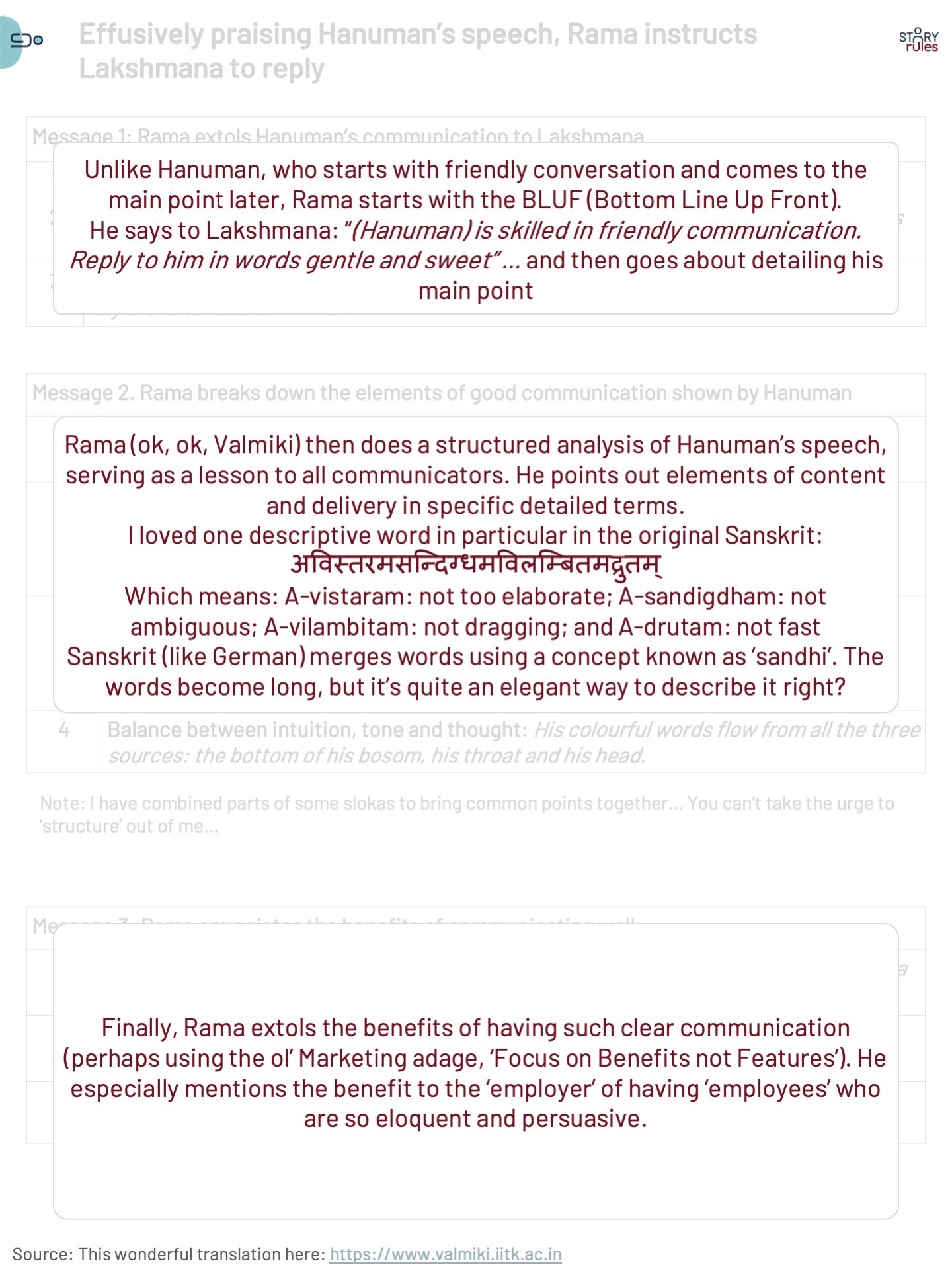A Storytelling Coach More details here: https://www.linkedin.com/in/ravishankar-iyer/
2,500-year-old advice on better storytelling
Hello! You are getting this email as a part of the 'Story Rules on Saturday' Newsletter. To get your own copy, sign up here. If you'd prefer not to get these anymore, you can unsubscribe here.
I know. Things are looking crazy grim.
I just hope that you and your loved ones are doing okay during these scary times. Stay strong, stay safe.
Meanwhile, I thought I’ll take your mind off the pandemic with this captivating extract from an ancient story.
The story of a fascinating conversation
Two brothers are walking in a dense forest. The setting is beautiful.
It is spring. There’s an eye-catching lake filled with lilies and lotuses in full bloom. The lush grass shines like a gorgeous carpet. Treetops are covered with scent-laden flowers and entwined with flowering creepers. A gentle breeze blows, sending some of these flowers floating to the ground. The rustling breeze, the buzzing bees and the crooning cuckoos provide mellifluous background music to this heavenly scene…
Alas, despite this stunning setting, the elder brother is anguished and full of laments to his younger brother...
And Lakshmana has no words of solace for his brother Rama.
This portion - from the 1st Sarga (section) of the Kishkinda Kanda (Book of Kishkinda) of the epic Ramayana - is the prelude to an absorbing exchange that happens soon after - between Rama and Hanuman.
You’d think the first conversation between these two divine beings would be like one between an ardent devotee and his God… with Hanuman singing Rama’s praises and the Lord blessing him.
It was quite different. And it has something - ok a LOT - to do with what I teach.
Let’s find out.
The Conversation - and my analysis
So Rama and Lakshmana, distraught due to the kidnapping of Sita, are walking to the land of the Monkey-King Sugreeva (since they have received intel that the vanaras can help them in their quest).
From the treetops, Sugreeva watches the two strapping guys walking in the forest with majestic bows, quivers full of arrows and sharp swords.
And he panics. Could these two foreigners be sent by his vile brother Vali, to finish him off?
He plays safe and decides to send his trusted minister, Hanuman, to find out.
The all-powerful Hanuman takes the shape of an ordinary mendicant and approaches the brothers in all humility.
And this is what he says (each cell in the table below refers to the translation of an individual sloka - my thanks to this wonderful resource from IIT-K for the original Sanskrit slokas and their simple translation):
 |
So what is Hanuman saying? Here’s my summary using the Pyramid Principle :)
 |
Here’s my take on the storytelling techniques applied by Hanuman (sorry Valmiki) in that speech:
 |
I thought the use of contrast was pretty cool. But there’s another technique that’s instructive.
Hanuman does not lead with his request of friendship with Sugreeva. Does that not contradict with the principle of starting with key idea - the ‘Elevator Pitch’ - first? Especially given you are presenting to a leader?
There’s a reason for Hanuman’s tactic of using the ‘bottom-up’ way of communicating his Pyramid of ideas. He’s just met Rama and doesn’t yet have credibility with his audience.
By initially sharing his high-quality analysis of Rama and Lakshmana’s appearance in Vedic Sanskrit, he’s basically telling them: I’m the real deal, you can trust me.
Once he’s built that trust, he brings out the request - of friendship with Sugreeva.
Rama’s response
On hearing this eloquent speech, Rama responds (addressing Lakshmana):
 |
And here’s the Pyramid Principle summary for Rama’s speech:
 |
What techniques does Rama use here?
 |
Rama shares the importance of being ‘balanced’ in communication. It’s quite fascinating to note he notes good communication being a balance between chest (heart), throat (tone) and head (logic). Pretty close to Ethos-Pathos-Logos of Aristotle!
Also, unlike Hanuman, Rama leads with his main instruction - “Reply in gentle and sweet words”, in the first sloka itself … instead of waiting till the end of the speech for that.
Why?
In Rama’s case, he’s communicating with Lakshmana - someone with whom he has high Ethos. He doesn’t need to wait till the end to make his recommendation.
When communicating, you have to keep the audience and context in mind.
2,500-year-old advice on storytelling
This ‘advice’ - by Valmiki - is probably 2,500 years old (maybe older). Incidentally, Aristotle was writing about Ethos-Pathos-Logos and other elements of Rhetoric around that time (2300 BCE).
I thought it would nice to learn from our ancient storytellers for a change - especially given the recent occasion of Rama Navami.
May the good Lord give us all collective strength to defeat the evil multi-headed pandemic…
Take care.
Special thanks to my Dad for pointing out this incident from the Ramayana and sharing some great resources, including some cool analysis by Sundar Kumar.
Thanks
Ravi
PS: Got this email as a forward? Get your own copy here.
Access this email on a browser or share this email on Whatsapp, LinkedIn or Twitter
Ravishankar Iyer
A Storytelling Coach More details here: https://www.linkedin.com/in/ravishankar-iyer/
Welcome to the sixtieth edition of '3-2-1 by Story Rules'. A newsletter recommending good examples of storytelling across: 3 tweets 2 articles, and 1 long-form content piece Let's dive in. 𝕏 3 Tweets of the week Source: X I think everyone - not just entrepreneurs - should study philosophy. (Reid Hoffman is the founder of LinkedIn) Source: X Heartwarming example! Also great to see medical facilities in India realise the importance of better communication with patients. Source: X This is super...
Welcome to the fifty-ninth edition of '3-2-1 by Story Rules'. A newsletter recommending good examples of storytelling across: 3 tweets 2 articles, and 1 long-form content piece Let's dive in. 𝕏 3 Tweets of the week Source: X This would be a great resource for authentic data on India. Source: X I saw this statistic in the Indus Valley 2024 Report too - Indian corporates need to up their R&D spend! Source: X Don't wait for inspiration to begin writing. 📄 2 Articles of the week a. 'Selling...
Welcome to the fifty-eighth edition of '3-2-1 by Story Rules'. A newsletter recommending good examples of storytelling across: 3 tweets 2 articles, and 1 long-form content piece Let's dive in. 𝕏 3 Tweets of the week Source: X Democrats in the US just need to look for the right norm - global leaders - to feel better about their President's approval ratings! Source: X Interesting perspective on how home-schoolers might have an advantage in certain areas! Source: X Good use of contrast to share...